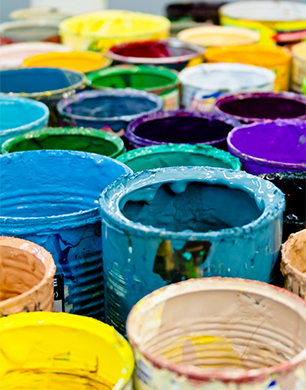
Photo Credit: David Waschbüsch via www.pexels.com
Getting ready to do some decorating? Buying paint can be a nuisance if you’re not sure what to buy, or even know what paint you need. Without getting misled by all the amazing things the label on a can tells you, here are some of the best hacks for buying paint.
Keep an eye out for “Trade” paint
Ever look at paint in the store and wonder why prices vary so much? It’s because so many brands will have properties in the paint to make theirs try and stand out. It is something professional painters and decorators completely avoid. They opt for trade paints instead. You’ll see them in larger cans and tubs for just a little bit more than what your usual paint will cost.
Why use trade paint? Well, apart from being quicker to dry (remember, painters want things done quickly) it’s also a way to get brand paint at a better price per litre. For example, Dulux Trade paint will provide more benefits at a lower cost than the small cans you’ll see on the shelf.
Always keep an eye out for “trade” on the label, as it’s likely going to suit you better.
Understand which paint works on which surfaces
Don’t go lifting the first can you see because the price is good. It can be overwhelming looking at the shelves in the DIY store, but it is simple to deduce what type of paint you need, based on the surface you’re working with.
Matt paint is best for your ceilings and the skirting of the room as it can be applied quickly and keep its colour for a long time. When you want a no-fuss paint, like a pure white, go with matt.
Satin is the most common paint type and is generally used on walls. While some people will refer to Satin and Eggshell as two completely different paint types, they’re so similar that it’s easiest to think of them as the same. Satin generally has a soft finish.
That leaves Gloss, which is the shiniest in terms of the finished look and not “shiny” like something which reflects light. You want to use it on small areas when you want that almost plastic look as a covering coat.
Don’t paint until you prime!
Oh, the trouble you will have, and money wasted on good paint, if you don’t prime a surface correctly.
There’s a general rule of thumb to use when you’re priming:
If it’s new, prime away. If it’s old, pop a (under)coat on.
What do I mean by this? Well, if you have a new wall or are working materials which would be susceptible to the elements, you will want to apply a thin layer of primer first to help protect it and give your paint something to bind to. If you have a wall which has been painted before, and you’re putting a different colour on, you’ll want an undercoat applied to help with binding and also ensure that the older paint doesn’t start coming on.
For example, if you were replacing an intense red or blue with a beige or white, no undercoat would see you start having paint come through, and you don’t want to have to keep coat after coat. Speaking of which…
Smell doesn’t matter, drying time does
If you see a paint which is advertised for not having an intense smell as it dries, it’s a feature you shouldn’t need to pay attention to. Drying time and recoat turnaround time is really important and should never be overlooked. Usually, the “shinier” the paint, the longer it will take to dry. This is down to glossy paints being enamel based, while matt paints are more water based.
When you have a higher level of water in paint, it will evaporate quicker, which helps your paint dry in quicker. Water based paints also tend to have a less intense smell, which is why they’re often marketed as less odorous. It just happens to be the nature of the paint and usually not because the paint is formulated a particular way.
Get home hacks when you’re decorating
Thanks for reading and I hope you found this article to have some fantastic tips which will make buying paint easier. Don’t forget that you can get some fantastic tips on decorating by visiting the Interiors Notebook section of the site.

